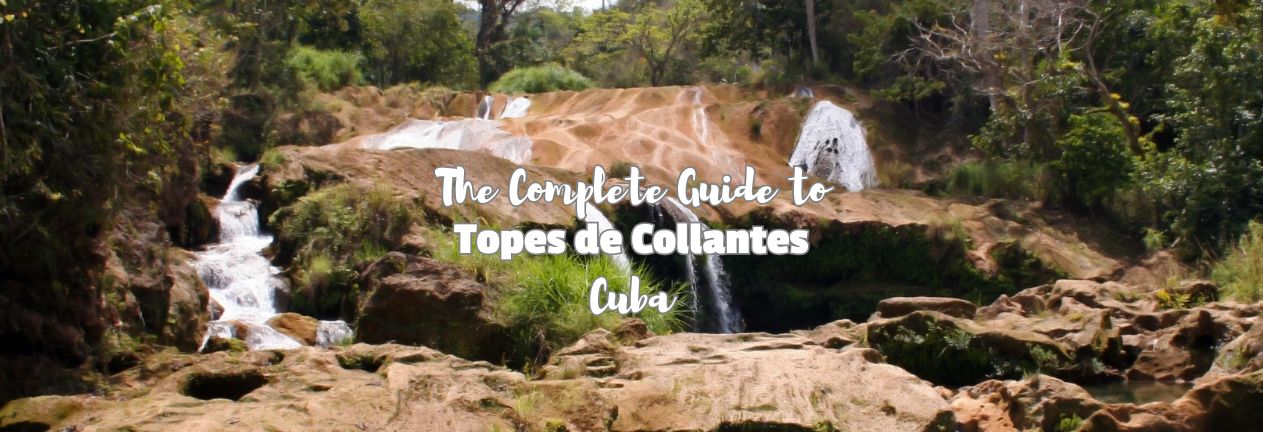Topes de Collantes National Park, in the Escambray Mountains of central Cuba, is one of the island’s most remarkable natural areas. The park is known for its lush rainforests, dramatic waterfalls, endemic wildlife, and cool mountain air. It offers a welcome break from the sultry heat of the city and a sharp contrast to Cuba’s coastal destinations. The park is made up of 5 individual areas, each of which has its own characteristics. Above all, it’s a delightful retreat for eco-travelers; the park is rich in biodiversity and layered with historical significance. Here’s my complete guide to Topes de Collantes, how to get here, what to see, and some tips to help you along the way.
THIS POST MAY CONTAIN COMPENSATED AND AFFILIATE LINKS. MORE INFORMATION IN OUR DISCLAIMER
Located just 20 kilometers (12.4 miles) from the UNESCO-listed city of Trinidad, Topes de Collantes rises nearly 800 meters (2,625 feet) above sea level. Its elevation creates a unique microclimate ideal for hiking, wildlife viewing, and exploring caves and rivers that wind through the forest. It makes it an easy day trip from Trinidad, but you can also visit en route from Cienfuegos to Trinidad.
PRACTICAL TRAVEL TIPS
- 🛡️ Get Travel Insurance: Civitatis includes medical expenses, repatriation, theft, luggage delays. No deductibles or upfront payments. Get a quote here. .
- 🛂💻 Buy your Cuba eVisa here.
- 🔌 Be ready for the plug, socket & power situation.
- 📶 Internet, maps, data on the go. Buy an eSim for Cuba. Or pre-order a physical SIM card
- 🔒 Do NOT leave home without a VPN. Buy for your trip here.
What to do at the Topes de Collantes National Park
Topes de Collantes is divided into five unique sub-parks, each with its own trails, waterfalls, and points of interest. Whether you have a single day or an entire week, these parks offer a wide variety of activities for every fitness level.
You don’t need a guide to hike the main trails of the Topes de Collantes, and the main trails are easy to navigate; your primary challenge will be transport. Your best bet is to decide which parts of the park you want to visit, and then arrange transport through your casa particular owner. If you’re short on time, then this one-day trip from Trinidad gets you to the highlights of the park.
Let’s start by going through the different parks that make up Topes de Collantes.
Parque El Nicho
A popular and easily accessible park, El Nicho features a short 700 m (0.43 mi) trail leading to a waterfall and crystal-clear natural pool. The area is ideal for swimming, photography, and quick nature walks. It’s commonly accessed from the Cienfuegos side. You can easily visit either en route from Cienfuegos to Trinidad or on a day trip from Cienfuegos.
- Here’s a day trip from Cienfuegos to El Nicho
- This option takes you from Cienfuegos to Trinidad via El Nicho (select the options for how long you want to visit). It uses a service called Daytrip, which I’ve written about here.
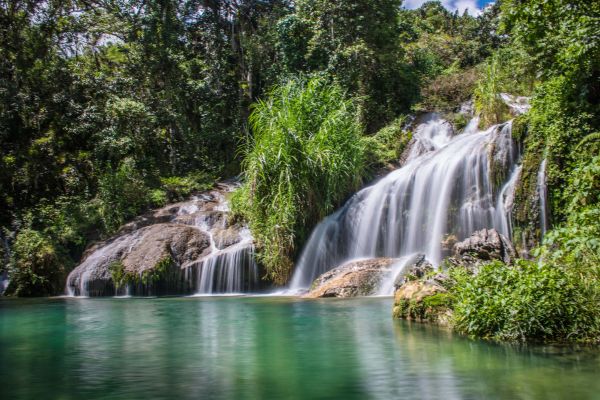
There’s just one trail here. It’s less than half a mile long (700 meters), but this trail, the Sendero El Reino de Los Aguas, isn’t the real reason for coming. It’s the natural swimming holes that are the main attraction at Parque El Nicho. The trail is steep, though, and runs alongside the river to a natural pool and a waterfall. This is probably the most lovely swimming spot in the Topes de Collantes. My guide to visiting El Nicho is here.
Parque Guanayara
This park is known specifically for the Centinelas del Río Melodioso trail, a moderately challenging 6 kilometers (3.9 miles) round-trip hike through dense forest and coffee plantations. The highlight is El Rocío, a 27-meter (88.6 feet) high waterfall, and the nearby Poza de Venado swimming hole.
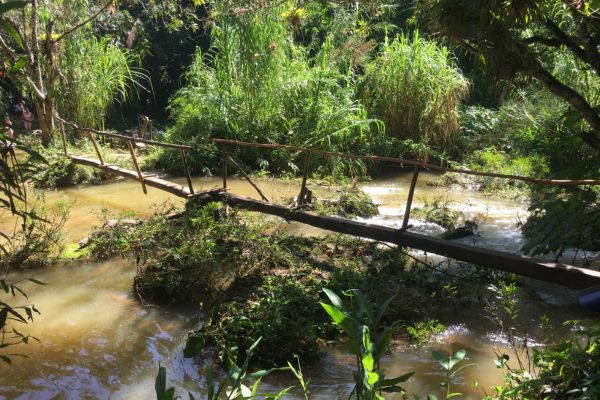
It’s about an hour from Trinidad to get here, but the trail is worth it, past the coffee plantations, before you head into the valley that contains the waterfall and swimming area. Your casa particular owner will be able to assist with tours to Parque Guayanara.
Parque El Cubano
Parque El Cubano is the closest to Trinidad and offers a gentle 3-kilometer (1.86 mile) one-way trail (6 km/3.73 mi round-trip) to the Javira waterfall. A small cave near the waterfall adds to the adventure. This is one of the most accessible parks and trails for families and casual hikers. Even the road to get here is paved!
The trail is mainly in the forest (think cover and shade from the relentless Cuban sun!), and the pool at the Javira waterfall means you’ll be able to refresh yourself with a swim. There’s even a cave here with some stalagmites.
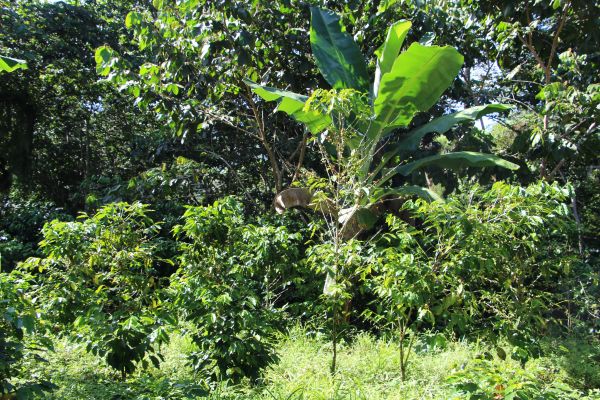
Parque Altiplano
Parque Altiplano comes complete with its own town, named Topes. There are hotels and facilities here, so if you plan to spend more than just the day in the Topes de Collantes, then Topes is where you should base yourself.
This is a great area to visit from Trinidad, and this day trip is perfect for exploring the Sendero Vegas Grandes.
And there are a few trails here of note. The two main ones are
- Sendero Salto del Caburní: A 5-kilometer (3.1 mile) round-trip hike to a 62–64 meter (203–210 feet) waterfall plunging into a pool. Allow about 3 hours for the round-trip hike and swim.
- Sendero Vegas Grandes: A more difficult 2 kilometer (1.24 mile) one-way hike with a steep descent to a hidden waterfall backed by a cave. Return the same way. Assume this hike will take 2 hours for the return trip.
You can connect these two hikes, but a guide is recommended as the connecting trail isn’t well signposted. You can hire a guide at the information center in Topes.
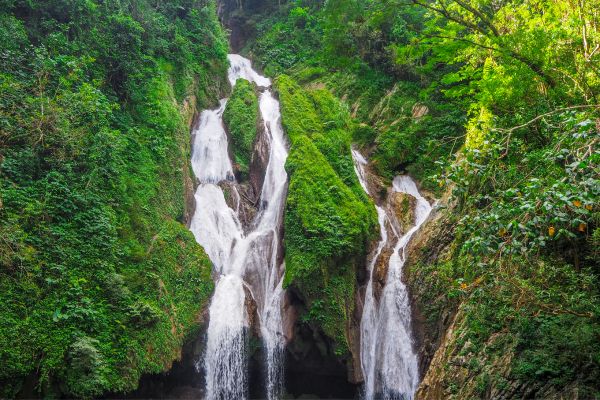
Parque Codina
Parque Codina offers tranquil forest trails and botanical interest. Two trails here are of interest to the day hiker, and they’re both well signposted.
- Sendero de Alfombra Mágica: A 1 kilometer (0.62 mile) loop trail through an orchid garden near Hacienda Codina. To get to the trail head, you’ll need to take a 4 kilometer road that really needs a 4×4 vehicle.
- Sendero La Batata: A 3 kilometer (1.86 mile) one-way trail (6 kilometer/3.73 mile return) leading to a cave system with subterranean pools. The trail is in Parque Codina, but the trailhead is actually in Parque Altiplano, so if you’re staying overnight in Topes, then this is an easy add-on hike to take.
Where to Stay at the Topes de Collantes National Park
The nearby city of Trinidad is the most convenient base for visiting the park, unless you’re heading to El Nicho, and then you’re better off being based in Cienfuegos.
If you prefer to stay in the park, then options include:
- Kurhotel Escambray: A Soviet-era health resort near Parque Altiplano.
- Hotel Los Helechos: Modest accommodations with great access to trails.
- Villa Caburní: A peaceful cluster of cabins surrounded by forest.
For a more intimate and immersive experience, there are also casa particulares in the village of Topes. You can book these through Homestay.com.
The History of the Topes de Collantes Park
The origins of Topes de Collantes as a protected area trace back to the 1930s and 1940s during the presidency of Fulgencio Batista. The area was first developed as a tuberculosis sanatorium, created for Batista’s wife, who was suffering from respiratory illness. Its location was chosen for its fresh mountain air and tranquil environment.
After the Cuban Revolution, the region took on new roles. It became a center for health and wellness tourism and served as a base and refuge during the Escambray Rebellion in the 1960s. Eventually, it was declared a protected area and transformed into one of Cuba’s largest nature reserves.
Geography of the Topes de Collantes National Park
Topes de Collantes sits at approximately 800 meters (2,625 feet) above sea level, with its highest point being San Juan Peak at 1,140 meters (3,740 feet). The park lies within the Escambray mountain range, a rugged and forested region characterized by limestone formations, deep canyons, and cascading waterfalls.
The park covers roughly 110 square kilometers (42.5 square miles), stretching across three Cuban provinces: Sancti Spíritus, Cienfuegos, and Villa Clara. Despite its size, the park is made up of five sub-parks, each with its own network of trails, natural pools, caves, and biodiversity.
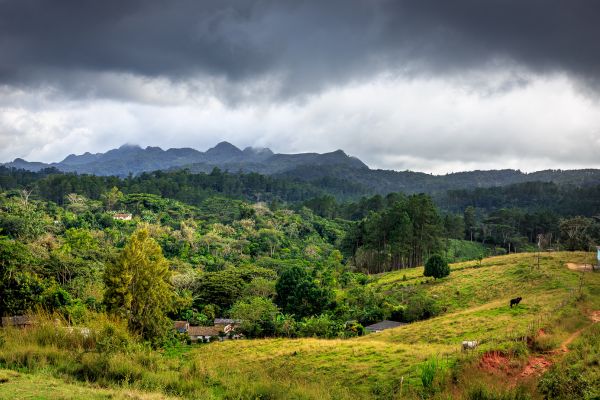
Where is the Topes de Collantes National Park
Topes de Collantes is located in central Cuba, in the heart of the Escambray Mountains. The nearest major city is Trinidad, just 20 kilometers (12.4 miles) to the south in Sancti Spíritus Province. The park also stretches into Cienfuegos and Villa Clara provinces, making it accessible from multiple directions depending on your itinerary.
How to Get to the Topes de Collantes National Park
Most travelers visit Topes de Collantes from Trinidad, a 30 kilometer (18.6 mile) drive into the mountains. Taxis and guided tours are the most convenient options. For those coming from Cienfuegos, Parque El Nicho is one of the closest access points. Shared taxis (collectivos) often travel between Cienfuegos and Trinidad and can drop passengers off near the park entrances.
If you’re renting a car, then this does provide the most flexibility but requires navigating steep and winding roads. Read my guide to renting cars in Cuba here.
Day trips are available to be prebooked and prepaid with local businesses through Civitatis.com
- Here’s a day trip from Cienfuegos to Parque El Nicho
- This day trip from Trinidad goes to Parque Altiplano
What Can You See at the Topes de Collantes National Park
There are a variety of reasons for visiting Cuba’s National Parks (my guide to the main parks is here), and they’re usually hiking, flora, and fauna. Here’s a little of what you can expect here.
Flora at the Topes de Collantes National Park
The park is home to over 548 species of plants, with around 53 that are endemic to the area. You’ll encounter dense forests filled with tree ferns, pine, mahogany, eucalyptus, magnolia, and Cuba’s national flower, the mariposa. Orchids are also abundant, especially in the cloud forest sections of the park.
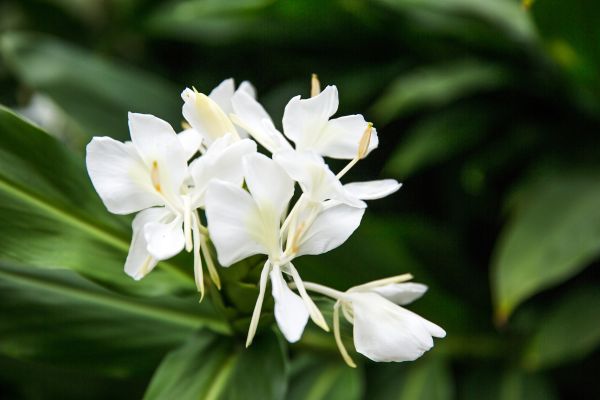
Fauna at the Topes de Collantes National Park
Topes de Collantes is a haven for birdwatchers. Common sightings include the Cuban trogon (Tocororo), Cuban tody, bee hummingbird, dagger-bill woodpecker, and several species of owls. Mammals like the white-tailed deer, hutia (a large rodent), and various bat species inhabit the forest, as well as reptiles like the Santa María boa.
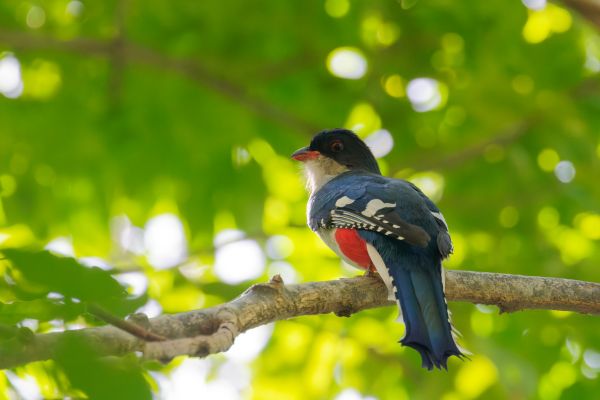
Hiking and Natural Geographic Highlights at the Topes de Collantes National Park
Natural highlights include dramatic waterfalls, subterranean rivers, and extensive cave systems. Salto del Caburní and Vegas Grandes are two of the park’s most stunning waterfalls, each with natural pools perfect for a refreshing dip.
Tips for Visiting the Topes de Collantes National Park
The hardest part of visiting is transport, so you’ll want to plan ahead and make arrangements for this. Ask at your casa particular in either Trinidad or Cienfuegos, or prebook and prepay day trips from either city.
- Here’s a day trip from Cienfuegos to Parque El Nicho
- This day trip from Trinidad goes to Parque Altiplano
Bring your passport, as it may be required for your entry to the national park.
Wear decent hiking shoes or sandals
Bring and use sunblock and a hat.
Bring water – even better, bring a filter water bottle (Read my guide to drinking water in Cuba here)
If you plan to swim, bring a travel towel and your swimwear.
The Topes de Collantes is a great place for spotting some endemic Cuban birdlife – get ahead of the game with this guide and figure out what you’re seeing. Alternatively, hire a guide from the information center in Topes, or take a tour from Trinidad.
CUBA TRAVEL RESOURCES
CUBA BY BUS EBOOK
Buy our Ebook. Preplanned itineraries, themed routes, exact instructions for an easy visit.
Buy Cuba by Bus
BEST
CASA PARTICULARS
See choices here
Luxury rooms? Budget rooms? Laundry? Best room choice & Great hosts.
TOURS & ATTRACTIONS
Top daytrips, small group tours, tickets, pay online easily with free cancellation and top local guides.
Top options here.
TRANSFERS & TAXIS
Read my Guide
Go from A to B easily. Sightsee along the way. Maximise your time in Cuba. Book early for more options.
Final Words on Visiting the Topes de Collantes National Park
The Topes de Collantes National Park is one of Cuba’s best-kept secrets, offering dramatic landscapes, rare wildlife, and refreshingly cool mountain air. With five unique sub-parks to explore, natural pools to swim in, and caves to discover, it’s a paradise for nature lovers and hikers alike. Whether you’re staying in Trinidad, Cienfuegos, or deep within the park, this is a Cuban adventure that you won’t forget.
Cuba’s Best is a participant in the Amazon Services LLC Associates Program, an affiliate advertising program designed to provide a means for sites to earn advertising fees by advertising and linking to amazon.com, amazon.co.uk, amazon.ca. Amazon and the Amazon logo are trademarks of Amazon.com, Inc. or its affiliates.
